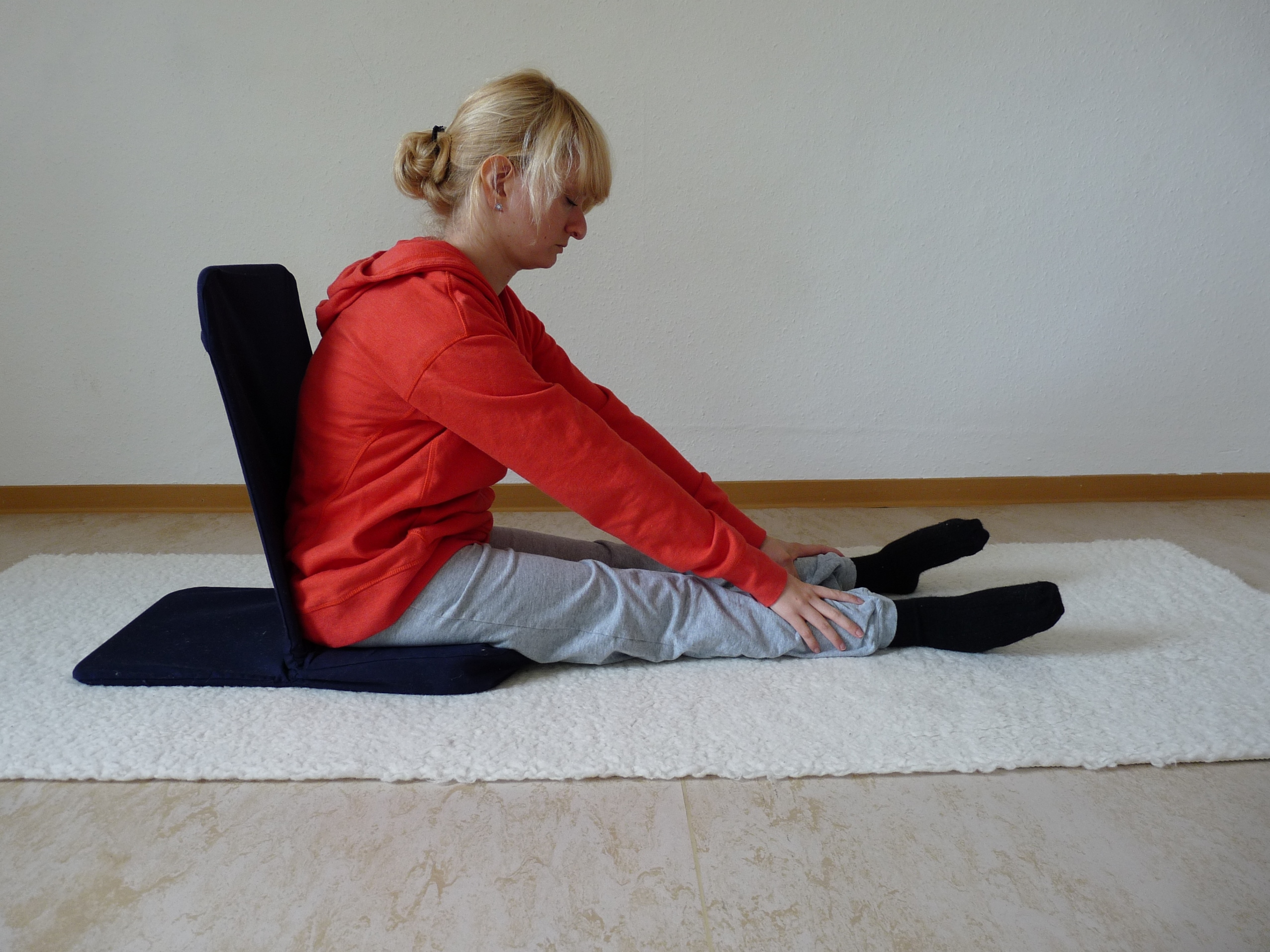
- 4 minutes to read
- 29 April 2020
Awareness of the body, regulating effects on spasticity, free and deeper breathing, feeling well and an increased fitness: These are only a few aspects of the feedback with regard to positive effects that yoga can have for people with spinal cord injury (SCI). Enough reasons for us, to have a closer look at this ancient tradition.
Originally, yoga is an Indian (also Tibetan) philosophical tradition and means “connect" or “unite". This signifies the connection between our individual human awareness and an infinite awareness as well as between body, spirit and soul. In the occidental philosophy, knowledge is acquired often through scientific studies; in the Indian tradition, however, one experiences reality through direct and personal experiences. The goal in doing yoga is to find out more about our inner values, to learn more about truth and our true identity or to experience our higher self. Yoga in its traditional form is a comprehensive system that deals not only with physical exercises, breathing techniques, meditation and nutrition but also psychology, interpersonal relationships, ethics and philosophy.
Over time, many different yoga practices have evolved. Some are still original and from India; others have been developed in Western cultures and they primarily focus on physical fitness and wellness. Some kinds of yoga can be soft, challenging, relaxing, meditative or acrobatic. Some of the most important ones are:
- Hatha Yoga
Hatha Yoga is the most well-known kind of yoga in the Western World and there are many schools and ways of doing it. Its focus is on the balance between body and soul which can be acquired through physical exercise and body control. Breathing exercises and/or meditation can also be part of some Hatha Yoga practices. - Gyan Yoga
Gyan Yoga is the yoga of knowledge. The goal is to experience truth through practice and knowledge and to see god or rather the divine in everything. - Kundalini Yoga
Kundalini Yoga is also called yoga of awareness. The balance between body and soul can be achieved through physical exercise, relaxation, meditation, the use of Mantras (syllables or words that are recited), Mudras (gestures performed with the hands), Bandhas (“body locks", namely muscle contractions) and Pranayamas (breathing techniques). Kundalini Yoga can help you to control your mind, the power within you and a higher consciousness is aspired. - Naad Yoga
Naad Yoga makes use of the power of sound. Different sounds, mantras, musical instruments, the voice etc. create vibrations which have an effect on the body and can help to clear the mind. For people with SCI all these kinds of yoga are suitable that do not include acrobatic body positions. Important parts of regular yoga practice for people with SCI include meditations and breathing techniques (Pranayamas), which can have a palliative effect on breathing difficulties.
Kundalini Yoga and its benefits for people with SCI
Many workshops have proved that Kundalini Yoga is very well suited for people with SCI. This is because...
- ... many exercises (Asanas) can be performed in a sitting position or while lying on the floor. By this, sequences of exercises (Kriyas) can be developed for every lesion level.
- ... Kundalini Yoga especially focuses on breathing techniques. They train and increase the lung volume.
- ... concentration and mediation are a fundamental part.
- ... in Kundalini Yoga also relaxation and body awareness are stimulated and increased.
- ... respect for yourself and others is part of the Kundalini Yoga philosophy and its exercises and meditations.

Yoga exercises in the wheelchair…


… and on the floor
With regular practice, Kundalini Yoga can have very positive effects on the body and mind for the practising person. Some reasons are:
- muscle growth and stretching
- regulating effect on organs and organ functions (e.g. kidney, digestion)
- improved breathing and lung volume
- improved body awareness
- reduction of stress and increase of inner peace and serenity
- reduction and eventual overcoming of anxieties
- reduction of medical conditions that are caused by stress (e.g. digestion problems and tensions)
- reduction of muscle tension
- regulating effect of heart and breathing frequency and potentially lowering of blood pressure
- increase of ability to concentrate
- stimulation and sharpening of self-awareness
- reconciliation of the soul and subconscious – even spiritual blockades can be overcome
With the permission of a doctor Kundalini Yoga is suited for everyone. The physical exercises can be practised and visualised and to engage in breathing techniques and meditation is possible even for people with a higher lesion level. People with SCI have to learn to listen to their body when doing yoga – just like anybody else.
Additional information:
Sources:
- URL: http://www.kundaliniyoga-ak.de/ (retrieved September 15, 2014)
- Kuwert, A. (2014): Kundalini Yoga für RollstuhlfahrerInnen. Gross-Umstadt: YogiPress.
Author
- Antje Kuwert, yoga teacher and yoga teacher's instructor
updated: September 2014


Be the first to comment!